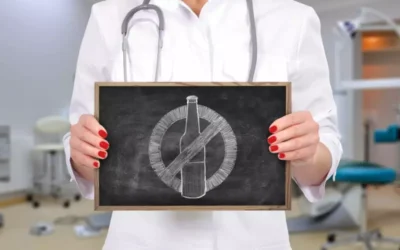Also, results of an intervention are not solely dependent on art therapy, as it is used along with pharmacotherapy. The research comprising a small number of people makes it impossible to know how precise the results are, making it complicated to predict if the results will be the same in larger groups of people. Richards et al. introduced art-therapy exercises art therapy for addiction to the intervention group for one and a half hours in their study. The activities included hat decoration, collage, embossing, painting, pottery, photography and printmaking. Each week, the participants developed an art product based on the instructions. Art therapy has been shown to boost self-esteem by reinforcing emotions of self-worth or competence.
- Professionals have used art therapy to help clients with a wide range of conditions, including emotional, physical, and psychological problems as well as with various diseases and disorders.
- If you’re creating a self-care box, have the participants add items that represent to them the idea of support and self-help.
- There has been a multitude of studies that show that connection to others within our community is vital to our mental and emotional well-being.
Holistic Therapy
Do not disregard or avoid professional medical advice due to content published within Cureus. The basic components of art-therapy interventions in the real world are hard to determine because there are currently no effective strategies for therapeutic, engaging, sensory art-therapy interventions. There is inadequate data to support the effectiveness of art therapy, and hence, more well-powered, high-quality trials with relevant outcome measures are required and more research is needed on the subject.
Art Therapy Is Not for Everyone
While substance use disorders have long been viewed as primarily affecting men, women, transgender, and non-binary individuals also suffer from addiction at high rates. It’s hard to find motivation to do anything when all you want to do is drink or use drugs. “We’re all invested in https://ecosoberhouse.com/ knowing how it works and what are the risks for people.” The podcast also interviewed two people (their full names were not revealed) who said they received MDMA in the large-scale, or Phase 3, trials and experienced feelings of suicidality and other distress after the studies.
- You can learn more about the training and educational requirements to become an art therapist on the AATA website.
- Negative, judgmental thoughts can cloud the mind, creating a harsh environment in an individual’s head and hindering recovery.
- At your next opportunity, you could illustrate how you felt when you wanted to drink, as well as any emotions or concerns you had at that moment.
- Relapse prevention techniques are essential for people aiming to finish their relationship with substance abuse and maintain sobriety.
- For example, if participants tend to be impulsive, Flora may choose colored pencils instead of markers because colored pencils require people to slow down and consider the process more.
How Many People In The Us Are Addicted To Drugs

Mary Kate Roohan, Psy.D., is a licensed psychologist and drama therapist and the founder of Thrive and Feel, a therapy practice that supports clients in managing emotional sensitivity. In my personal experience, weaving drama therapy techniques into DBT skills training has proven to be profoundly impactful. The Action-Based DBT approach, with its emphasis on storytelling and embodiment, offers an immersive and experiential learning environment that can be especially beneficial for those who find traditional methods challenging.
Dangers of Marijuana Maintenance in Recovery
These data are cross-sectional, restricting our ability to make causal arguments. CAM includes diverse treatments, such as art therapy, music therapy, hypnotherapy, acupuncture, and herbal remedies. Mental illness and emotional traumas are often the culprits behind substance abuse disorders and art therapy can be invaluable in managing those exact issues. Group art therapy can also be a helpful treatment option because it allows patients to connect with others like them.
For many people, jotting down a note on paper can not only serve to help them remember the thoughts occurring at any given time, but they may also interpret them differently after viewing it on paper. The same concept applies to art; expressing what’s going on in your brain visually, whether via ink, paint, clay, or something else, allows you to show others your mental state and better understand these emotions yourself. SUD can feel debilitating and can be one of the most challenging situations you’ll ever navigate, but it doesn’t have to continue to negatively impact the rest of your life. Art, in its many forms, can make the experience of recovery more fulfilling and enjoyable. Whether you like to paint, write music, or doodle in your journal, art may be the tool you need to bolster your recovery journey. Extant research on the benefits of art therapy is widely documented, although the research designs limit conclusive generalization.
Art therapy for addiction help wtsp.com – WTSP.com
Art therapy for addiction help wtsp.com.
Posted: Wed, 13 Feb 2019 08:00:00 GMT [source]
